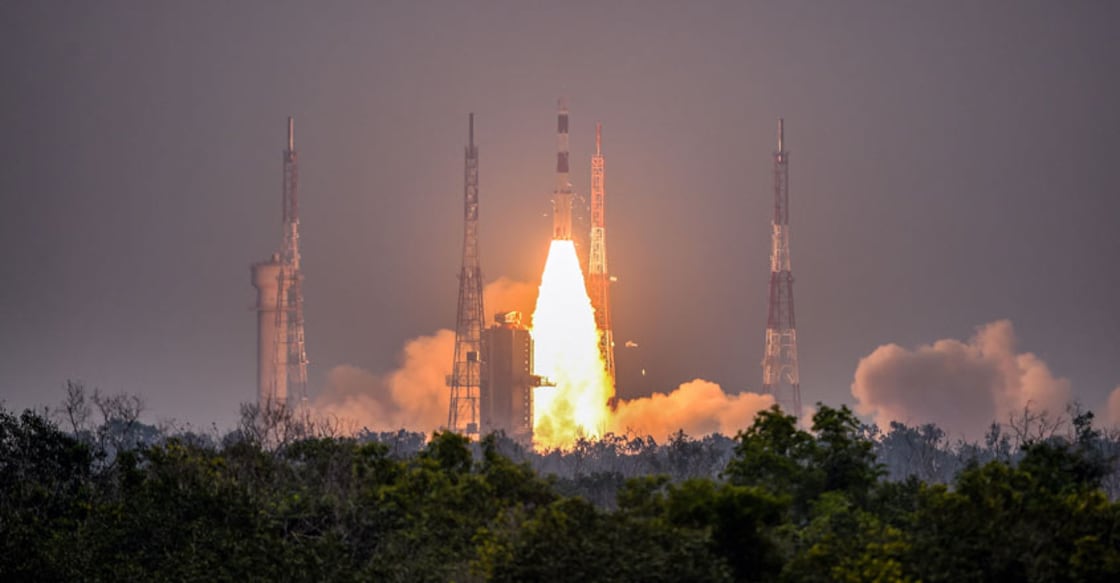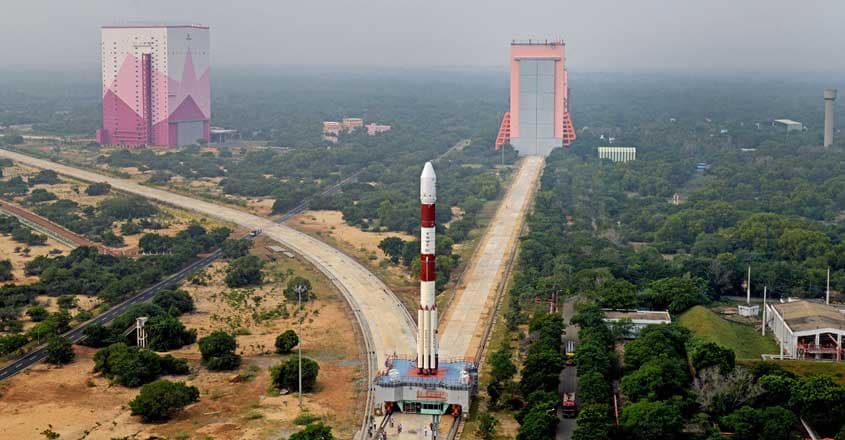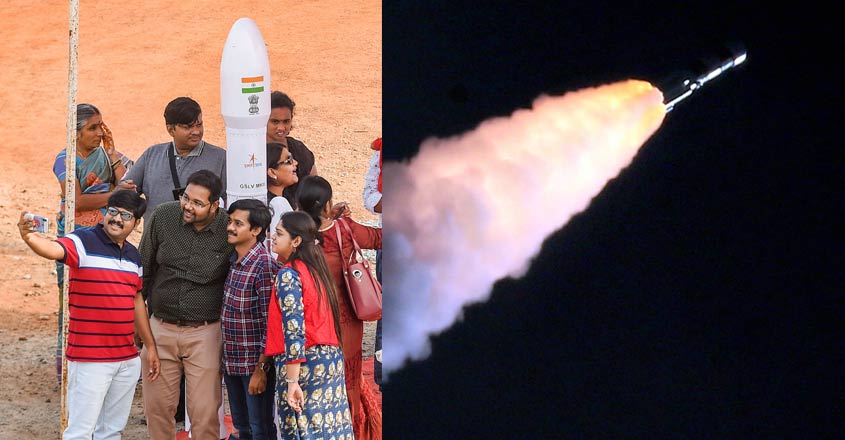PSLV's 50th mission also reveals ISRO's unscientific fear of number 13

Mail This Article
If Indian Space Research Organisation (ISRO) scientists were less superstitious, the 50th mission of ISRO's highly dependable Polar Satellite Launch Vehicle (PSLV), scheduled to lift off on December 11, would have been named PSLV-C47.
But now, the landmark mission is christened PSLV-C48, its name adjusted perhaps for superstition.
Till now, there have been 49 PSLV missions; 46 operational missions that launched over 250 Indian and foreign satellites and two spacecrafts (Chandrayaan-1 in 2008 and Mars Orbiter Spacecraft in 2013), and three development missions at the start (PSLV D1, D2 and D3) that refined and fine-tune the launcher.
In the 49 are also included two failed missions: the first development mission PSLV-D1 on September 20, 1993, and the PSLV-C39 Mission launched on August 31, 2017, which failed to carry the Indian Regional Navigation Satellite System (IRNSS) to the intended orbit.
The latest was PSLV-C47 Mission, launched few days ago on November 27. It placed in orbit Cartosat-3, an advanced earth observation satellite, and 13 nanosatellites of USA.
(The 'C' in the names of these missions stand for 'commercial'. It signifies that besides putting Indian satellites in orbit, PSLV missions also serve the space activities of other countries for a price.)
Find the missing number
Now, move upwards from the first operational mission or the fourth PSLV mission (PSLV-C1 that was launched on September 29, 1999, and put the Indian Remote Sensing satellite in orbit). Between the 12th and 13th operational missions, there is a glaring absence.
After PSLV-C12, which took the Radar Imaging Satellite (RISAT-2) to orbit, the next mission is PSLV-C14, which placed in orbit the advanced satellite for oceanographic studies OCEANSAT-2. There is no mission named PSLV-C13.

ISRO has not officially accounted for this sidestepping of the number 13. But ISRO scientists Onmanorama talked to, on the condition of anonymity, said that ISRO considers 13 “inauspicious”.
It seems rationalising this fear is harder than rocket science for these scientists. “We deal with the extraterrestrial unknown and somehow 13 invokes the fear of the unknown,” a scientist said.
Alien territory
Here is what another scientist said: “To say that there is lot of uncertainty in space research is to state the obvious. Take the Chandrayan-2 Mission for instance. God alone knows what exists on the Lunar south pole and the mission faltered just two kilometres from the surface of the moon. We are knocking at the limits of science. This is why we have this ritual of our top scientists visiting Tirupati before any launch. We are doing all that we can, both scientific and irrational, to minimise risks. Keeping 13 out perhaps is part of this,” he said.
It is as if ISRO carries the absence of 13 as a distinguishing mark. None of the VSSC units in Kerala (Veli, Valiyamala and Vattiyoorkavu) has a bus with the route number 13. Perhaps not to make it seem too blatant, the route numbers of buses from the Vattiyoorkavu unit begins at 14.
Wordsmith and Thiruvananthapuram MP Shashi Tharoor would have probably called this “Triskaidekaphobia”, the word that denotes an irrational fear of the number 13.

Apollo 13 tragedy
This aversion to 13 is not unique to ISRO. Even NASA is said to have found the number 13 untouchable. After the failure of the Apollo 13 Mission, none of its space missions have been given the number 13.
The US Space Transportation Systems (STS), or its space shuttle programmes, were initially given very straightforward names. The first was called STS-1, the second STS-2, the third STS-3 and so on. But when the 13th flight should have been named STS-13, NASA went ahead and gave it a puzzling new moniker: STS-41B.
NASA came up with a logical explanation for complicating the space shuttle nomenclature. '4' was short for 1984, the year the shuttle was launched . '1' referred to Kennedy Space Centre, the location from where the shuttle was launched; '2' was the number given to Vandenberg Air Force Base, the second most important launch location in the US. And 'B' suggested that it was the second planned launch of 1984.
Omen 13
But many top NASA astronauts like Paul J Weitz, the commander of the maiden flight of space shuttle Challenger, believe that 13 was banished from the American space lexicon because NASA was spooked by the failure of the Apollo 13 Mission, 1970.
It was not just the name of the Mission. There were other aspects about the Apollo 13 tragedy that gave 13 an ominous edge. Two days after the mission took off from the Kennedy Space Centre, and when the spaceship was some 200,000 miles from Earth, the oxygen tank in its service module bombed. The date: April 13.
And when the Commander of the spaceship James A Lovell (played by Tom Hanks in the super successful movie version 'Apollo 13') first saw evidence of the explosion, “some sort of gas leaking into space”, it was exactly 13 minutes after the sound of the explosion.


